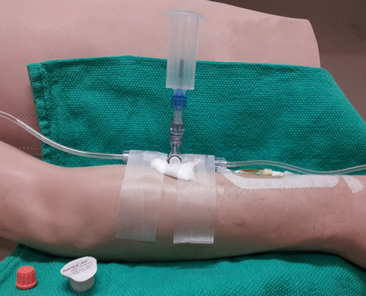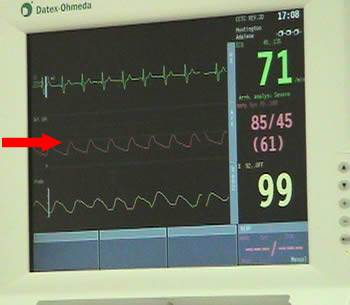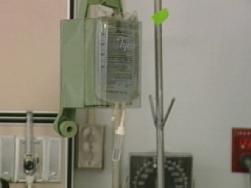ARTERIAL LINE
(also called "Art Line")
An arterial line is a small catheter, similar to an intravenous, that is inserted into an artery (Image 1).
Image 1: Manniquen with an arterial line in place. The wrist (radial artery)
is the most common placement.
Arteries carry oxygen rich blood to all of the organs and tissues of the body. Arteries also have the highest pressure of all of the blood vessels. When you have a blood pressure measured in your doctor's office, you are having the pressure in your arteries measured.
Arterial lines are commonly used in critical care. They allow us to draw blood easily without having to stick the patient with a needle. They also allow us to draw blood tests that must be drawn from an artery (such as arterial blood gases).
Arterial lines are also used when close blood pressure monitoring is required. Arterial lines are connected to a bedside monitor to continuously display both the waveform and pressure from within the artery (Image 2).
Image 2: Arterial waveform on beside monitor (red)
prevent blood from clotting in an arterial catheter, a slow continuous infusion of fluid is run into the catheter (at 2-3 ml per hour). To prevent the blood from backing up, the infusion is kept under pressure. You may notice green or blue pressure boxes or bags hanging near the bedside. These boxes are used to compress the infusion fluid to maintain the infusion pressure. They are called a TycosTM(Image 3).
Image 3: Pressure infusor
After blood is withdrawn for lab tests, arterial catheters are flushed with the infusion fluid to prevent the line from clotting. Patients that are awake may feel a warm sensation in the area of the catheter during flushing. Otherwise, the catheter does not usually cause the patient any discomfort and most patients are unaware that the catheter is in place.






